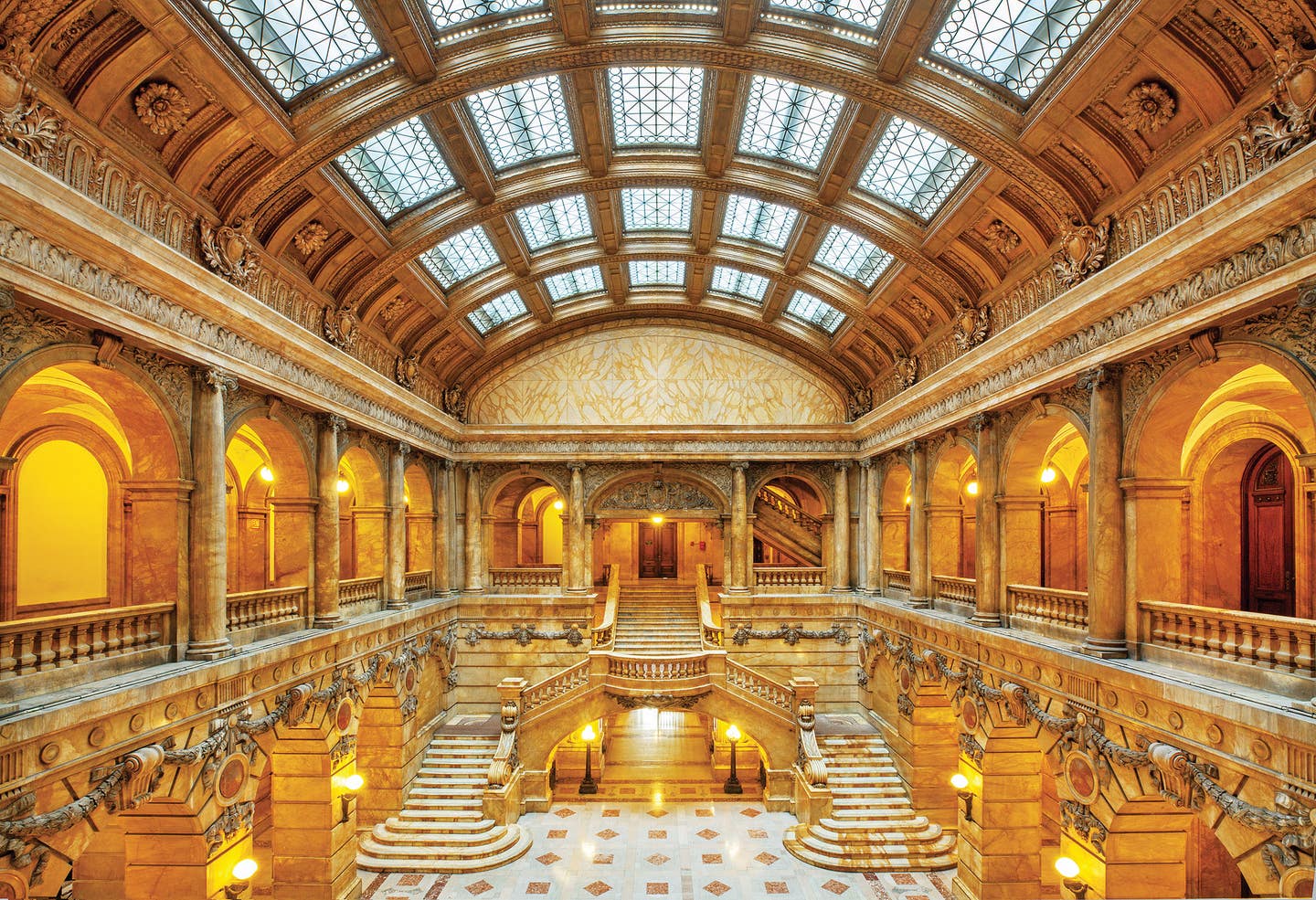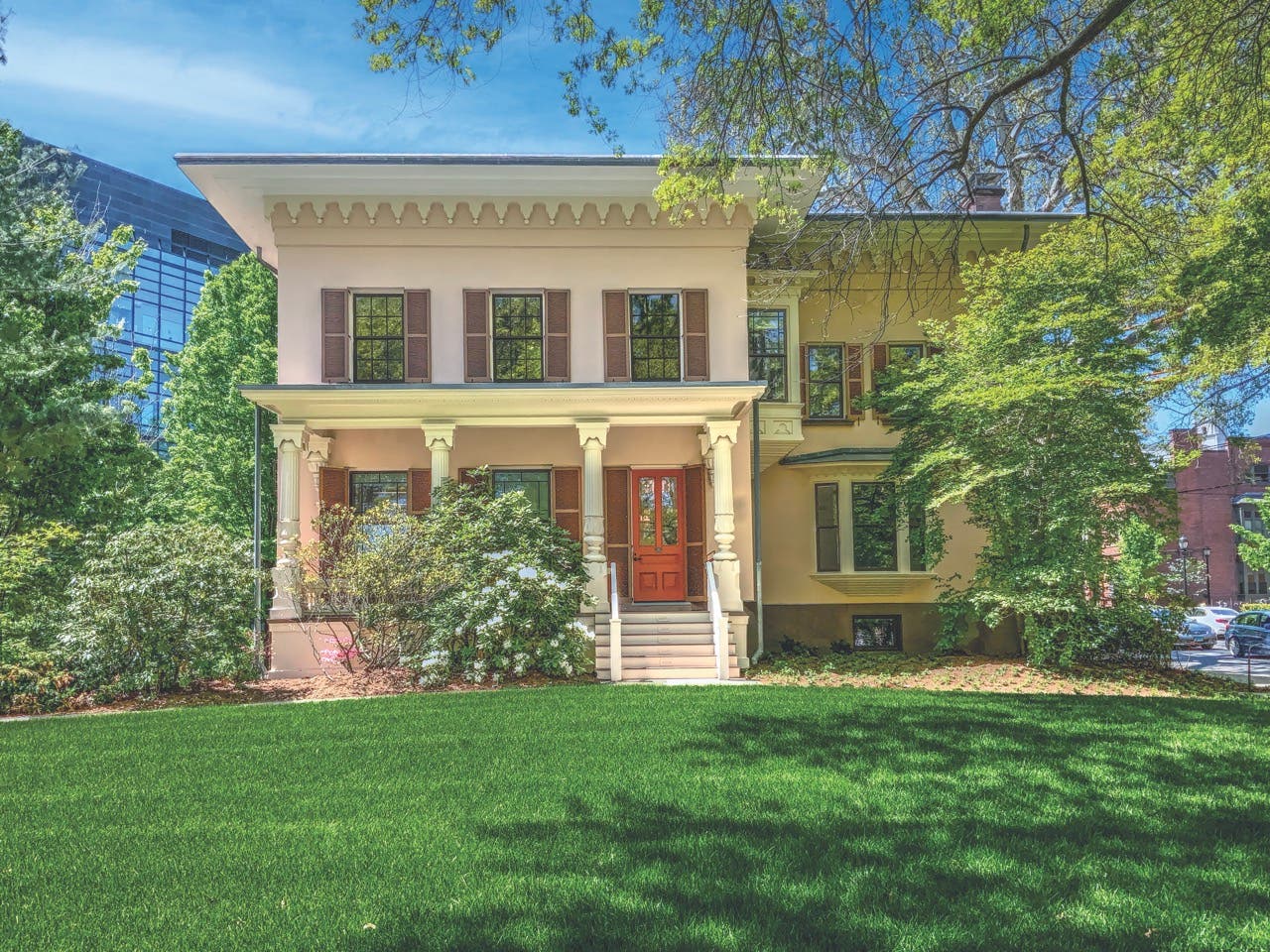
Product Reports
The Many Sides of Stained Glass
Popular wisdom holds that stained glass—or making windows and screens of shaped and colored glass—has its genesis in the Gothic cathedrals of the 10th century as an enduring source of “divine light.” More likely, the art dates back to ancient Rome and Egypt and, rather than being static, has always transitioned to meet the needs, materials, and tastes of each era, as some of today’s venerable businesses illustrate.
Family run since 1920 Rohlf’s Stained & Leaded Glass in Mount Vernon, New York tackles a wide range of windows, from new design and fabrication, to restoration of stained glass windows, to decorative glass of many ilks. They are also equally versatile in doing restoration of steel casements with leaded glass in residences. “We like to do both restoration and new work,” reports Peter Hans Rohlf “because we have the capability for both ends of it here in craftspeople and artists.” In fact, Rohlf, who worked in the studio as a teen with all aspects of stained glass, is one of those people. “Myself, I enjoy restoration work, going into old houses of worship and seeing the 100-year-old windows.”
Recently, they’ve completed a window commission for The Basilica of St. Patrick’s Old Cathedral in Little Italy, New York. Not to be confused with its illustrious, uptown namesake, this is the original cathedral of the Archdiocese of New York, constructed 200 years ago. They’re also doing work for a Catholic church in Georgia.
Rohlf says they’re often asked whether stained glass designs are getting more contemporary, or if the market is still traditional? “We’re basically just doing traditional figures with simple backgrounds,” no doubt a great match for a company with over a century of experience.
At Burnham LaRoche in Medford, Massachusetts, Kevin M. Ryan puts a finer point on the multiple sides of the industry. “Years ago, ecclesiastical work was everybody’s bread-and-butter,” he says, “but over the last 20 years, that has diminished as religious denominations like the Catholic Church are merging and closing dioceses.” For example, in 2014 the Catholic Archdiocese of New York announced it would restructure 112 parishes—one third of its 368—into 55 new congregations. Diocese bankruptcies have also taken their toll.
What has taken up a lot of the slack, however, is restoration, conservation, and residential work, Though not the same scale as ecclesiastical in either size or complexity, the commissions keep coming. “Not every house wants a $10,000 window,” observes Ryan, “but maybe they want a $5,000 window.” In any event, he says the technical challenges are rarely a problem. Indeed, their skills range from figural compositions for Boston University’s Marsh Chapel to abstract designs for residences. They also consult on insurance projects. “We’ve been in business since 1895 and seen a lot in that time,” he says. “We do it all.”
Meanwhile, on the left coast, Tom Rigdon at The Hyland Studio in Santa Clara, California, sees a similar seismic shift. “Stained glass is often thought of as ‘church glass’ but that is no longer the case,” he says. “I think most people would be surprised to know that about 80 percent of the new stained glass and leaded glass we design and build is for a home.” He reports that today they are creating more and more bright and very aesthetic pieces for residences. These range from simple windows to massive stained-glass domes. Judging by their project gallery they are equally adept at historically inspired glass, such as doorway transoms in the Frank Lloyd Wright Tree of Life mode, or a three-part, entry hall series emulating the designs of Arts and Crafts architects Charles and Henry Greene. “Of course, we still create church windows too, but not many new churches are being built these days. However, we do a large quantity of stained glass restoration for churches as most church windows need rebuilding and restoration every 50 to 75 years.”
Though the pandemic has proved anemic for industries like travel and retail, some stained glass studios found it an opportunity to branch out. At Bovard Studio, Inc. in Fairfield, Iowa, Ron Bovard says that the Studio’s restoration of St. Michael The Archangel Roman Catholic Church in Pawcatuck, Connecticut, won First Place for Connecticut’s 2020 A.B.C. (Association of Builders and Contractors) Award, Institutional Category, along with Petra Construction. Bovard Studio also garnered The 2020 Lucy G. Moses Preservation Award for their restoration of the large leaded glass lay lights in the Manhattan Surrogate Courthouse in New York City.
On top of the accolades is their non-decorative work. “This past year Bovard Studio’s 6000 Series Frames, with Laminated Insulated Glazing, is our third product to pass Florida’s hurricane and impact codes,” Bovard says, “the strictest in the United States.” The business also completed construction on a new, 12,000 square-foot facility for manufacturing their metal window frames. “Our US Patented venting system is designed for the preservation of stained-glass windows, and our three products are designed for stained glass windows with exterior glazing and frames tested and approved for hurricane codes,” he explains. “This expands Bovard Studio to 62,000 square feet of studio and manufacturing space, all the better to serve our clients’ stained glass needs.”
Gordon H. Bock is an architectural historian, instructor with the National Preservation Institute, and speaker through www.gordonbock.com.









